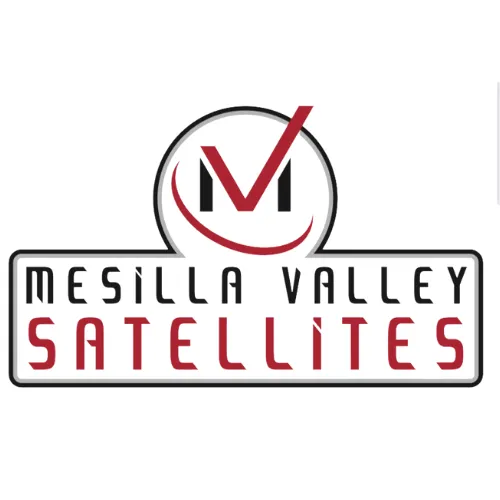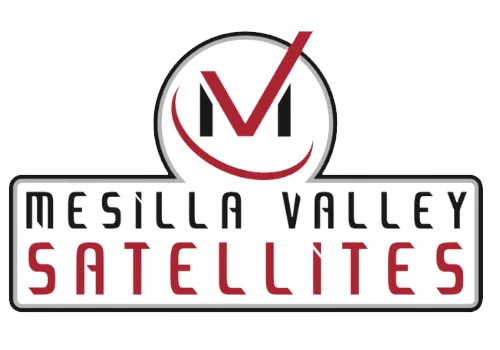Frequently Asked Questions
What is satellite Internet service?
Satellite Internet service is available everywhere, even in areas with slow DSL and where fiber and cable options will not reach. With satellite Internet, the signal is sent from a satellite to a satellite dish mounted on your property, which connects to a modem inside. The modem includes Wi-Fi so that your phone, computer and other Wi-Fi devices can connect to the Internet. Satellite Internet is available wherever you live, even if you live in a rural area where cable or fiber lines are unavailable.
What can I do with satellite Internet service?
Satellite Internet service brings high-speed Internet to areas where fiber and cable options are unavailable. You can chat, email, stream video clips, visit your favorite social media sites, work from home, and connect your children to their distance learning programs.
How does a satellite Internet connection work?
Step 1: A request for a Web page is sent from your computer to a satellite about 22,000 miles out in space. At this altitude, the satellite’s period of rotation (24 hours) matches the Earth’s, and the satellite always remains in the same spot over the Earth (geosynchronous orbit). Because Internet via satellite is so technologically advanced, this distance hardly makes a difference, even with rural Internet connections.
Step 2: The satellite contacts the Hughes Network Operations Center (NOC) which locates the specific Website you have requested.
What is the Bonus Zone?
The Bonus Zone is a period of time from 2am-8am, when all customers have access to 50 GB/month of additional plan data! All MVS Gen5 plans come with additional plan data during the Bonus Zone. Use this additional plan data to download large files like movies, system updates for your computer, tablet, or smartphone—and more.
How does the Video Data Saver work?
MVS Gen5 automatically adjusts data rates for streaming video to deliver great picture quality while using less of your data. Speeds will adjust to deliver a DVD quality experience while using less data – allowing you to watch 3 times more video. If you want to watch an HD video, you can opt-in/opt-out of this data saver feature temporarily or permanently. You may also simply snooze the video data saver for 4 hours
What happens when I use up all of my plan data?
MVS No Hard Data Limits. That means that even if you exceed your plan data, we won’t cut you off or charge you more. If you do use all of your plan data before the end of the month, you will be able to continue using the Internet for all applications but your speeds will reduce and will typically be in the range of 1 to 3 Mbps. Major streaming providers state on their websites that watching videos with DVD quality (aka Standard Definition) is possible at .5 to 1.5 Mbps (you can refer to the chart below). In periods of network congestion, speed may be slower and could be less than 1 Mbps which may mean that some applications will be slower to run and you may see buffering in video playback. You can purchase extra data, called Data Tokens, to bring your speed back up to 25 Mbps.Recommended SD streaming rates by streaming service: Netflix – 1.5 Mbps; Amazon Prime Video – 1.5 Mbps; Hulu – 1.5 Mbps; YouTube – .5 Mbps;
What is Express Repair plans?
Express Repair is a service protection plan designed to ensure that your internet service will be restored in an expedited manner in the event that an interruption occurs. Under the plan, you continue to receive Technical Phone Support 24 hours a day, 7 days a week, but if the problem cannot be fixed over the phone, a certified technician will come directly to your location to quickly restore your service. Express Repair customers pay a reduced service fee for onsite repair visits.
Two service options are available:
Express Repair – Basic: our commitment is to have a technician confirm a scheduled ETA and arrive by the second business day.
Express Repair – Premium: our commitment is to have a technician confirm a scheduled ETA and arrive by the next business day.
Both services offer live technical phone support (toll-free), and if needed, a certified technician will come to your home or business to restore service for only a $29.95 co-pay after the 30-day vesting period.
What are the most common myths about satellite Internet providers?
Some people may be hesitant to subscribe to satellite Internet because of myths they’ve heard – or because they are unaware of the convenience and quality offered by high-speed satellite Internet providers.
Myth #1 – Satellite Internet service providers don’t reach rural areas.
Hughes offers satellite Internet everywhere in the contiguous United States, including rural areas. Hughes is a reliable satellite Internet provider that supplies high-speed Internet service in areas where there is slow or no high-speed options.
Myth #2 – The satellite dish must be attached to a roof.
Although 97% of the time satellite antennas are attached to the roof of a home, satellite Internet service providers don’t always require it. A certified HughesNet installer is able to determine the best location on (or near) your residence where the satellite dish should be mounted.
Myth #3 – Using Satellite Internet ties up your phone line.
HughesNet delivers two-way, high-speed Internet access over satellite – not over your telephone line – so you can talk on the phone and surf the Web at the same time. That can save you money by eliminating the need for a second phone line.
Myth #4 – Satellite Internet equipment is big and complicated.
The bulky eight-foot wide satellite dishes from the 1980s are a thing of the past, at least when it comes to the needs of most businesses. HughesNet customers only need a computer, a modem, two coaxial cables, and the satellite antenna. The antenna is about the same size as most ordinary satellite TV dishes.
Frequently Asked Questions
What is satellite Internet service?
Satellite Internet service is available everywhere, even in areas with slow DSL and where fiber and cable options will not reach. With satellite Internet, the signal is sent from a satellite to a satellite dish mounted on your property, which connects to a modem inside. The modem includes Wi-Fi so that your phone, computer and other Wi-Fi devices can connect to the Internet. Satellite Internet is available wherever you live, even if you live in a rural area where cable or fiber lines are unavailable.
What can I do with satellite Internet service?
Satellite Internet service brings high-speed Internet to areas where fiber and cable options are unavailable. You can chat, email, stream video clips, visit your favorite social media sites, work from home, and connect your children to their distance learning programs.
How does a satellite Internet connection work?
Step 1: A request for a Web page is sent from your computer to a satellite about 22,000 miles out in space. At this altitude, the satellite’s period of rotation (24 hours) matches the Earth’s, and the satellite always remains in the same spot over the Earth (geosynchronous orbit). Because Internet via satellite is so technologically advanced, this distance hardly makes a difference, even with rural Internet connections.
Step 2: The satellite contacts the Hughes Network Operations Center (NOC) which locates the specific Website you have requested.
What is the Bonus Zone?
The Bonus Zone is a period of time from 2am-8am, when all customers have access to 50 GB/month of additional plan data! All MVS Gen5 plans come with additional plan data during the Bonus Zone. Use this additional plan data to download large files like movies, system updates for your computer, tablet, or smartphone—and more.
How does the Video Data Saver work?
MVS Gen5 automatically adjusts data rates for streaming video to deliver great picture quality while using less of your data. Speeds will adjust to deliver a DVD quality experience while using less data – allowing you to watch 3 times more video. If you want to watch an HD video, you can opt-in/opt-out of this data saver feature temporarily or permanently. You may also simply snooze the video data saver for 4 hours
What happens when I use up all of my plan data?
MVS has No Hard Data Limits. That means that even if you exceed your plan data, we won’t cut you off or charge you more. If you do use all of your plan data before the end of the month, you will be able to continue using the Internet for all applications but your speeds will reduce and will typically be in the range of 1 to 3 Mbps. Major streaming providers state on their websites that watching videos with DVD quality (aka Standard Definition) is possible at .5 to 1.5 Mbps (you can refer to the chart below). In periods of network congestion, speed may be slower and could be less than 1 Mbps which may mean that some applications will be slower to run and you may see buffering in video playback. You can purchase extra data, called Data Tokens, to bring your speed back up to 25 Mbps.Recommended SD streaming rates by streaming service: Netflix – 1.5 Mbps; Amazon Prime Video – 1.5 Mbps; Hulu – 1.5 Mbps; YouTube – .5 Mbps;
What is Express Repair plans?
Express Repair is a service protection plan designed to ensure that your internet service will be restored in an expedited manner in the event that an interruption occurs. Under the plan, you continue to receive Technical Phone Support 24 hours a day, 7 days a week, but if the problem cannot be fixed over the phone, a certified technician will come directly to your location to quickly restore your service. Express Repair customers pay a reduced service fee for onsite repair visits.
Two service options are available:
Express Repair – Basic: our commitment is to have a technician confirm a scheduled ETA and arrive by the second business day.
Express Repair – Premium: our commitment is to have a technician confirm a scheduled ETA and arrive by the next business day.
Both services offer live technical phone support (toll-free), and if needed, a certified technician will come to your home or business to restore service for only a $29.95 co-pay after the 30-day vesting period.
What are the most common myths about satellite Internet providers?
Some people may be hesitant to subscribe to satellite Internet because of myths they’ve heard – or because they are unaware of the convenience and quality offered by high-speed satellite Internet providers.
Myth #1 – Satellite Internet service providers don’t reach rural areas.
Hughes offers satellite Internet everywhere in the contiguous United States, including rural areas. Hughes is a reliable satellite Internet provider that supplies high-speed Internet service in areas where there is slow or no high-speed options.
Myth #2 – The satellite dish must be attached to a roof.
Although 97% of the time satellite antennas are attached to the roof of a home, satellite Internet service providers don’t always require it. A certified HughesNet installer is able to determine the best location on (or near) your residence where the satellite dish should be mounted.
Myth #3 – Using Satellite Internet ties up your phone line.
HughesNet delivers two-way, high-speed Internet access over satellite – not over your telephone line – so you can talk on the phone and surf the Web at the same time. That can save you money by eliminating the need for a second phone line.
Myth #4 – Satellite Internet equipment is big and complicated.
The bulky eight-foot wide satellite dishes from the 1980s are a thing of the past, at least when it comes to the needs of most businesses. HughesNet customers only need a computer, a modem, two coaxial cables, and the satellite antenna. The antenna is about the same size as most ordinary satellite TV dishes.
How much data do I need?*
MVS Gen5 offers a range of plans with fast speeds, built-in Wi-Fi, no hard data limits, and advanced data-saving features—all you have to decide is how much data you need!
Use the chart below as a helpful guide
How much data do I need?*
MVS Gen5 offers a range of plans with fast speeds, built-in Wi-Fi, no hard data limits, and advanced data-saving features—all you have to decide is how much data you need! Use the chart below as a helpful guide
What can you do with
10 GB/month?
Streaming Audio/Radio
140 hours
OR
DVD-quality Video Streaming
15 hours
OR
HD-quality Video Streaming
5 hours
OR
Web browsing
5,000 pages
OR
Social Media
30 hours
What can you do with
20 GB/month?
Streaming Audio/Radio
280 hours
OR
DVD-quality Video Streaming
30 hours
OR
HD-quality Video Streaming
10 hours
OR
Web browsing
10,000 pages
OR
Social Media
60 hours
What can you do with
30 GB/month?
Streaming Audio/Radio
420 hours
OR
DVD-quality Video Streaming
45 hours
OR
HD-quality Video Streaming
15 hours
OR
Web browsing
15,000 pages
OR
Social Media
90 hours
What can you do with
50 GB/month?
Streaming Audio/Radio
720 hours
OR
DVD-quality Video Streaming
75 hours
OR
HD-quality Video Streaming
25 hours
OR
Web browsing
25,000 pages
OR
Social Media
150 hours
* Assumes DVD-quality video streaming consumes data at a rate of 700 MB/hour, HD-quality video streaming consumes data at a rate of 2 GB/hour, streaming audio/radio consumes data at a rate of 75 MB/hour, an average web page is 2 MB, and social media pages consume data at a rate of 350 MB/hour. Please be advised that the values provided should only be used as a general estimation, as data usage may vary by device, by type and by quality of content.
What can you do with
10 GB/month?
Streaming Audio/Radio
140 hours
OR
DVD-quality Video Streaming
15 hours
OR
HD-quality Video Streaming
5 hours
OR
Web browsing
5,000 pages
OR
Social Media
30 hours
What can you do with
20 GB/month?
Streaming Audio/Radio
280 hours
OR
DVD-quality Video Streaming
30 hours
OR
HD-quality Video Streaming
10 hours
OR
Web browsing
10,000 pages
OR
Social Media
60 hours
What can you do with
30 GB/month?
Streaming Audio/Radio
420 hours
OR
DVD-quality Video Streaming
45 hours
OR
HD-quality Video Streaming
15 hours
OR
Web browsing
15,000 pages
OR
Social Media
90 hours
What can you do with
50 GB/month?
Streaming Audio/Radio
720 hours
OR
DVD-quality Video Streaming
75 hours
OR
HD-quality Video Streaming
25 hours
OR
Web browsing
25,000 pages
OR
Social Media
150 hours
* Assumes DVD-quality video streaming consumes data at a rate of 700 MB/hour, HD-quality video streaming consumes data at a rate of 2 GB/hour, streaming audio/radio consumes data at a rate of 75 MB/hour, an average web page is 2 MB, and social media pages consume data at a rate of 350 MB/hour. Please be advised that the values provided should only be used as a general estimation, as data usage may vary by device, by type and by quality of content.
Find deals in your area.
Call (575) 888-8069 and speak to Mesilla Valley Satellites Inc, your local Internet Provider
Our Internet plans provide a high-speed, low-latency, reliable Internet experience.

110 W. Picacho Ave. Las Cruces, NM 88005
Our Location:

mesillavalleysatellites @gmail.com
Our Email:

Office: (575) 888-8069
Our Phone Number:
Mesilla Valley Satellites Inc. strives to provide fast and efficient service while installing or updating your current internet services. We provide the same level of service to our loyal customers as we would to our family and friends in hopes of providing outstanding customer service, every day.
Copyright © Mesilla Valley Satellites
Find deals in your area.
Call (575) 888-8069 and speak to Mesilla Valley Satellites Inc, your local Internet Provider
Our Internet plans provide a high-speed, low-latency, reliable Internet experience.

110 W. Picacho Ave.
Las Cruces, NM 88005
Our Location:

Our Email:

Office: (575) 888-8069
Our Phone Number:
Copyright © Mesilla Valley Satellites

